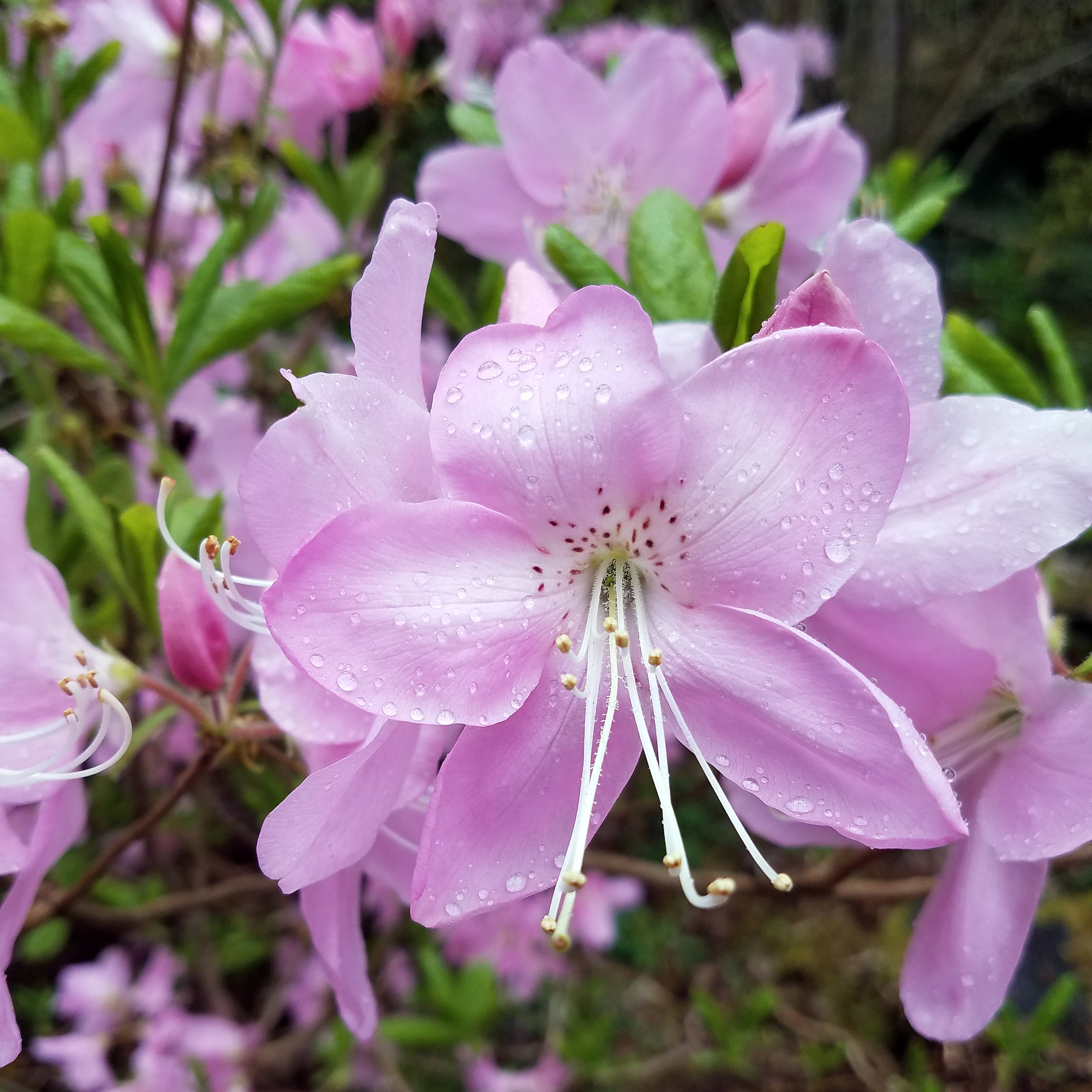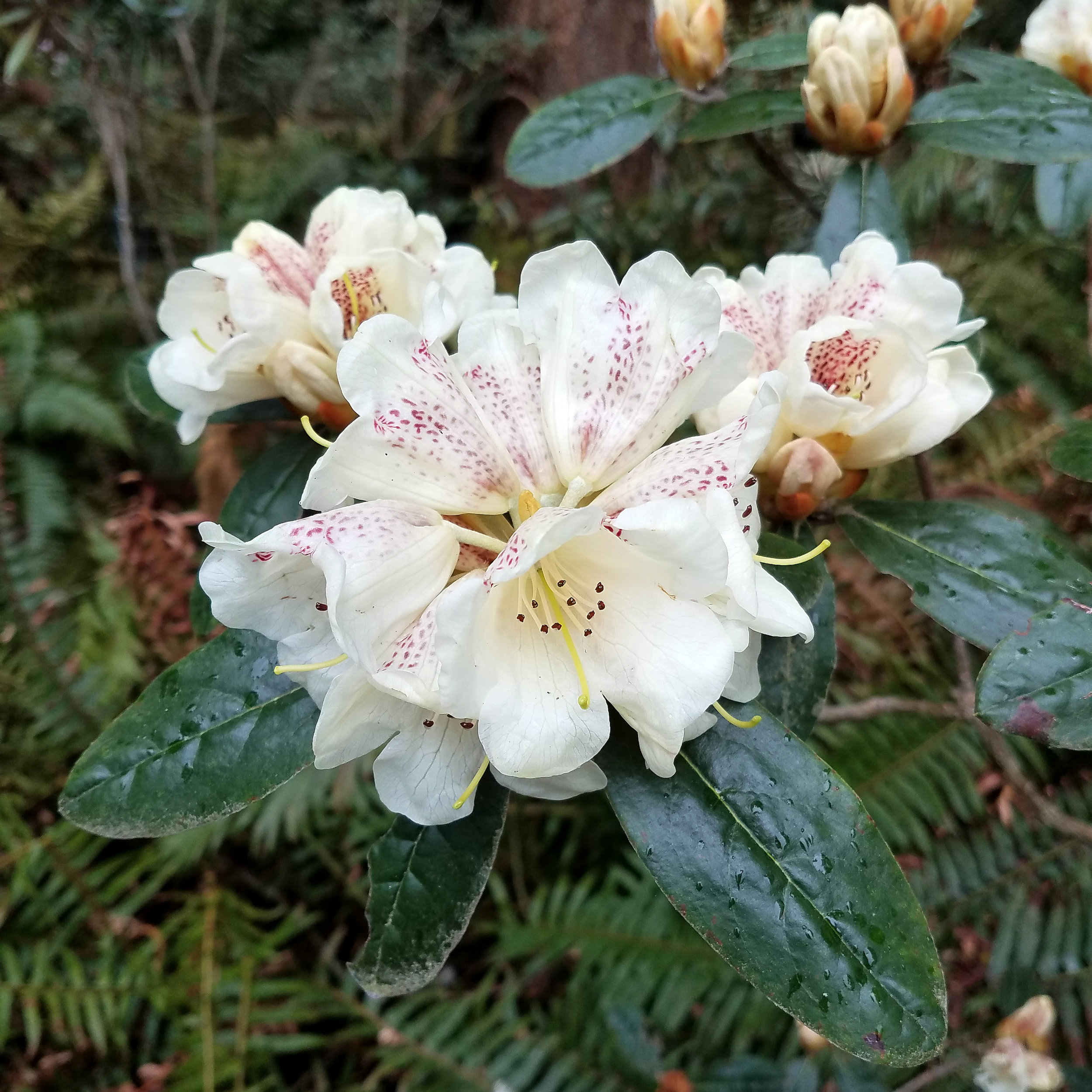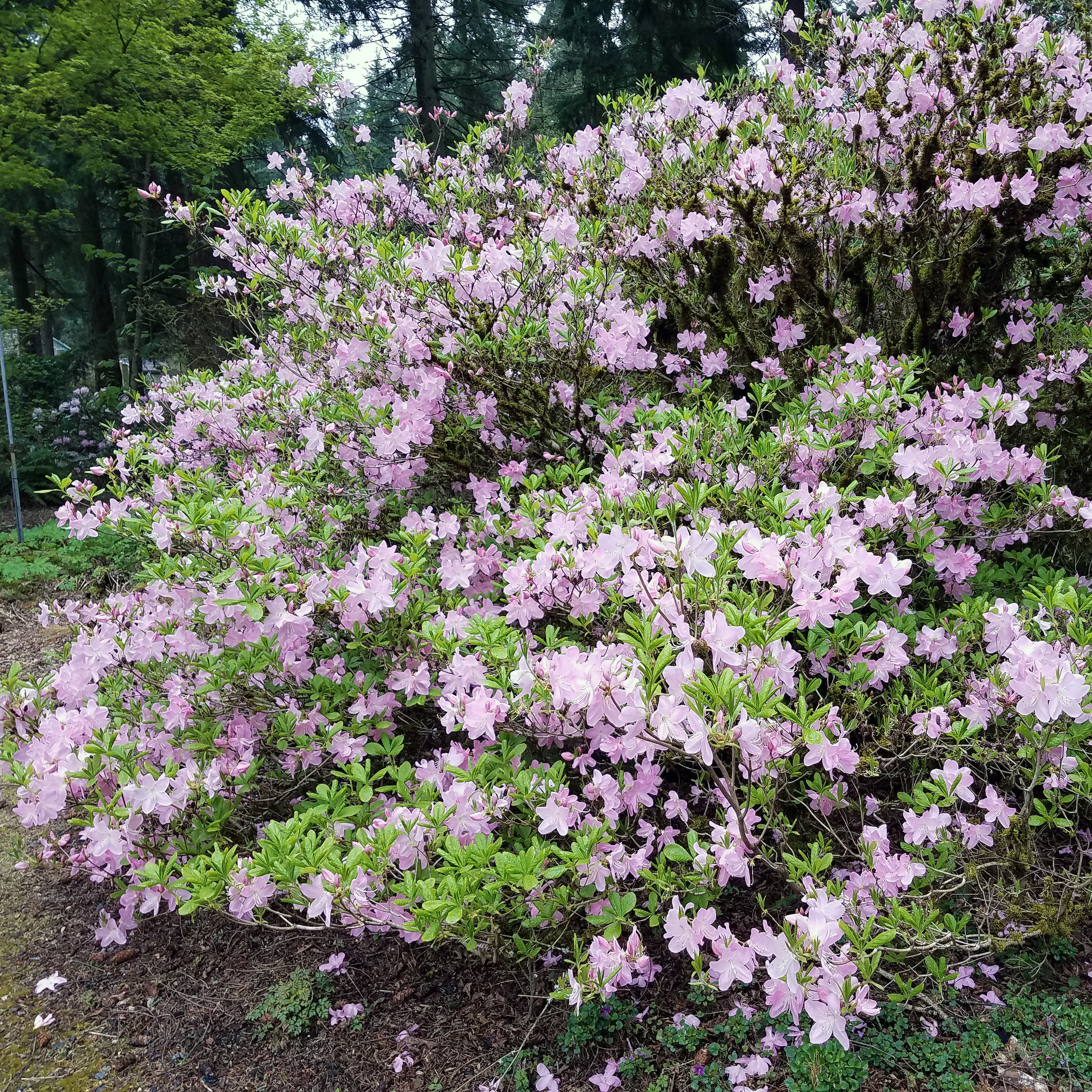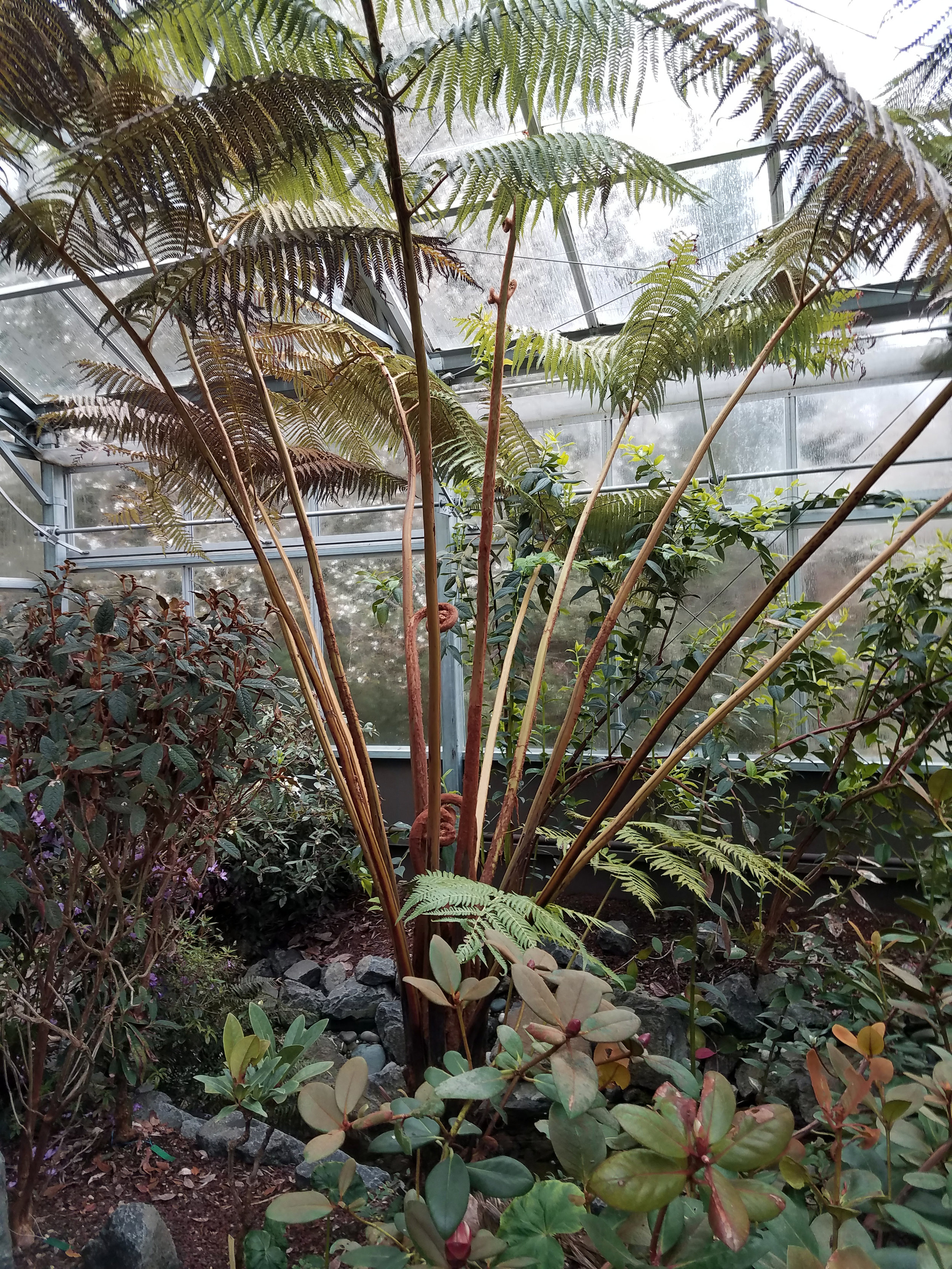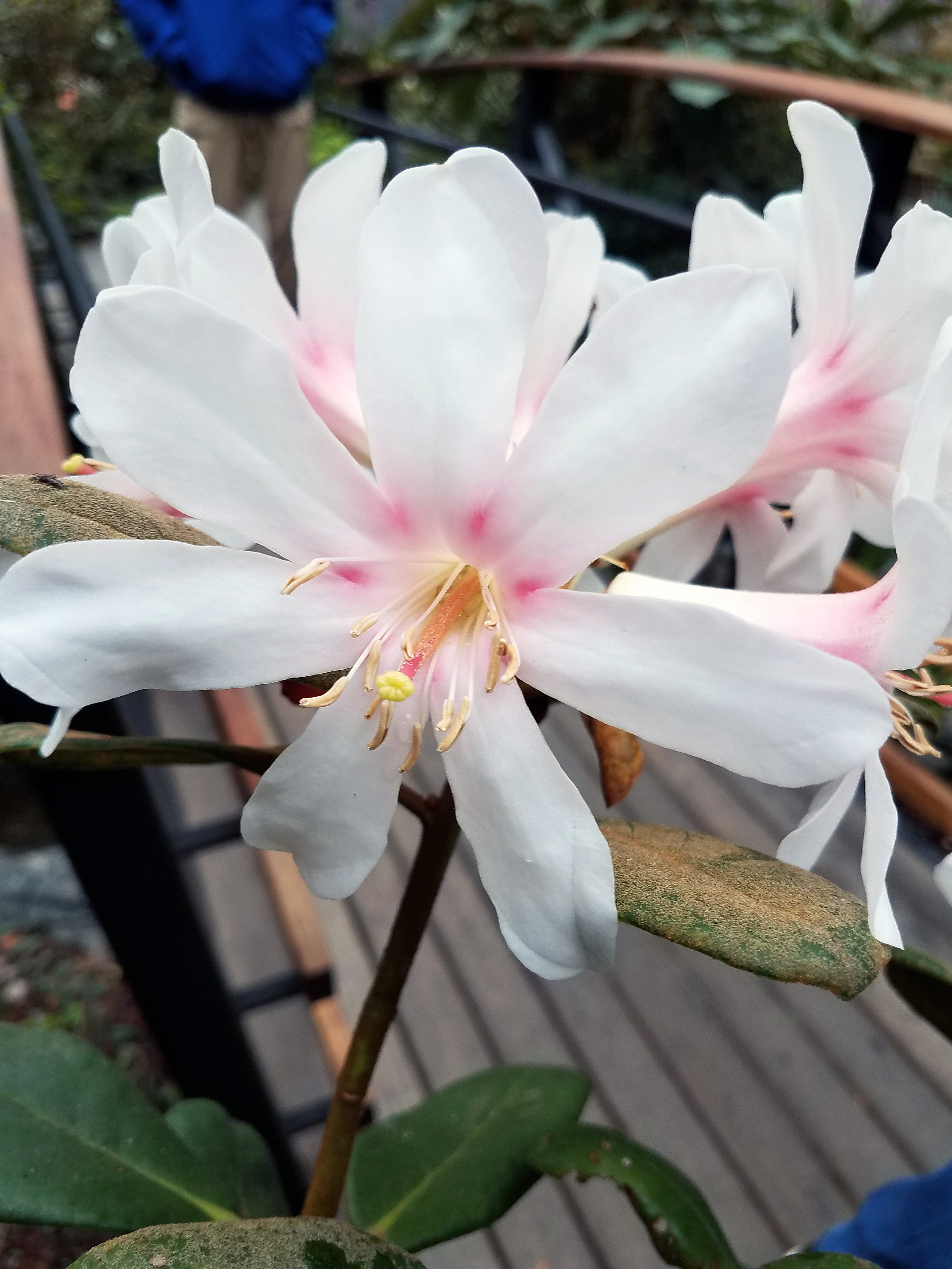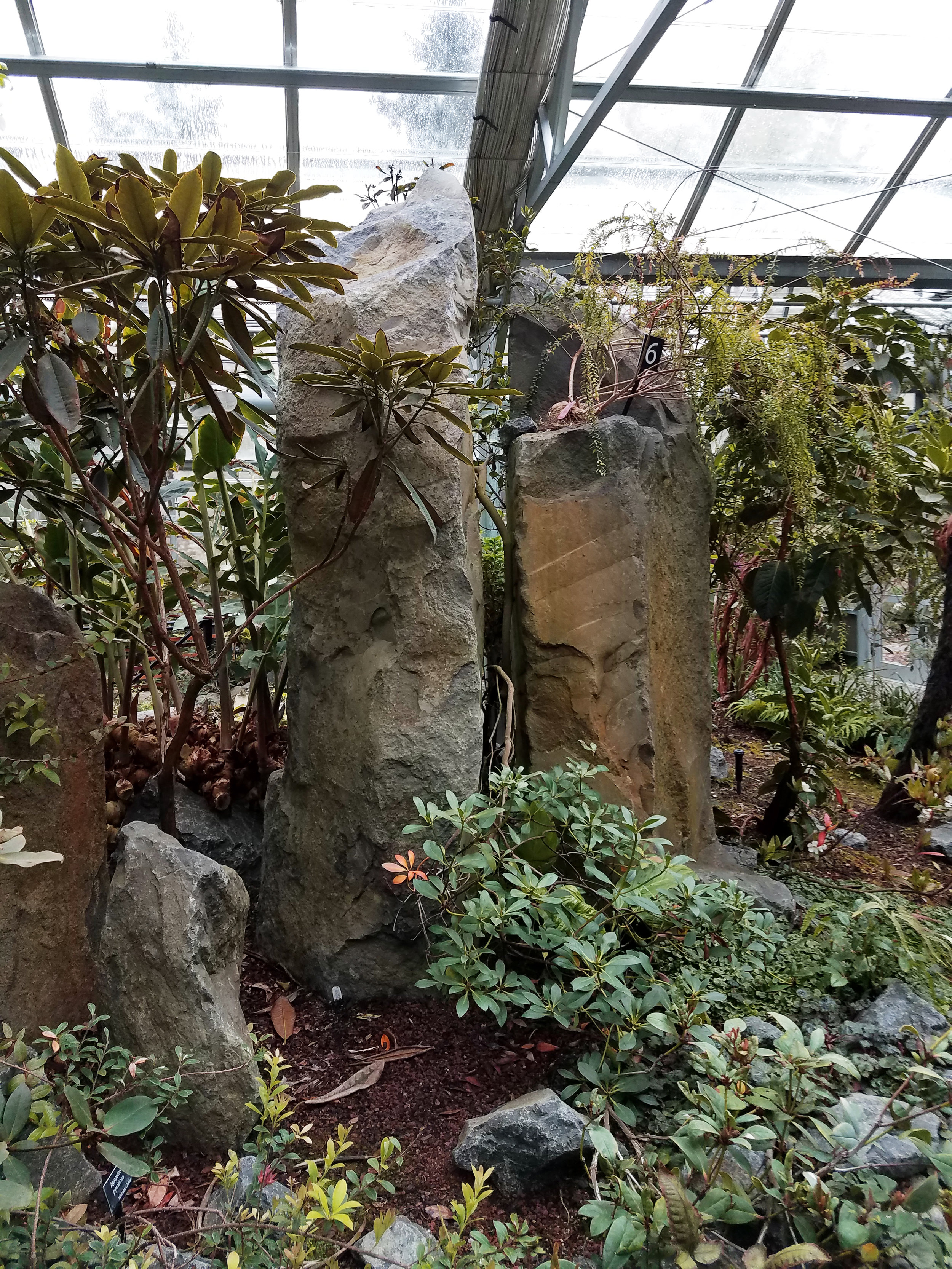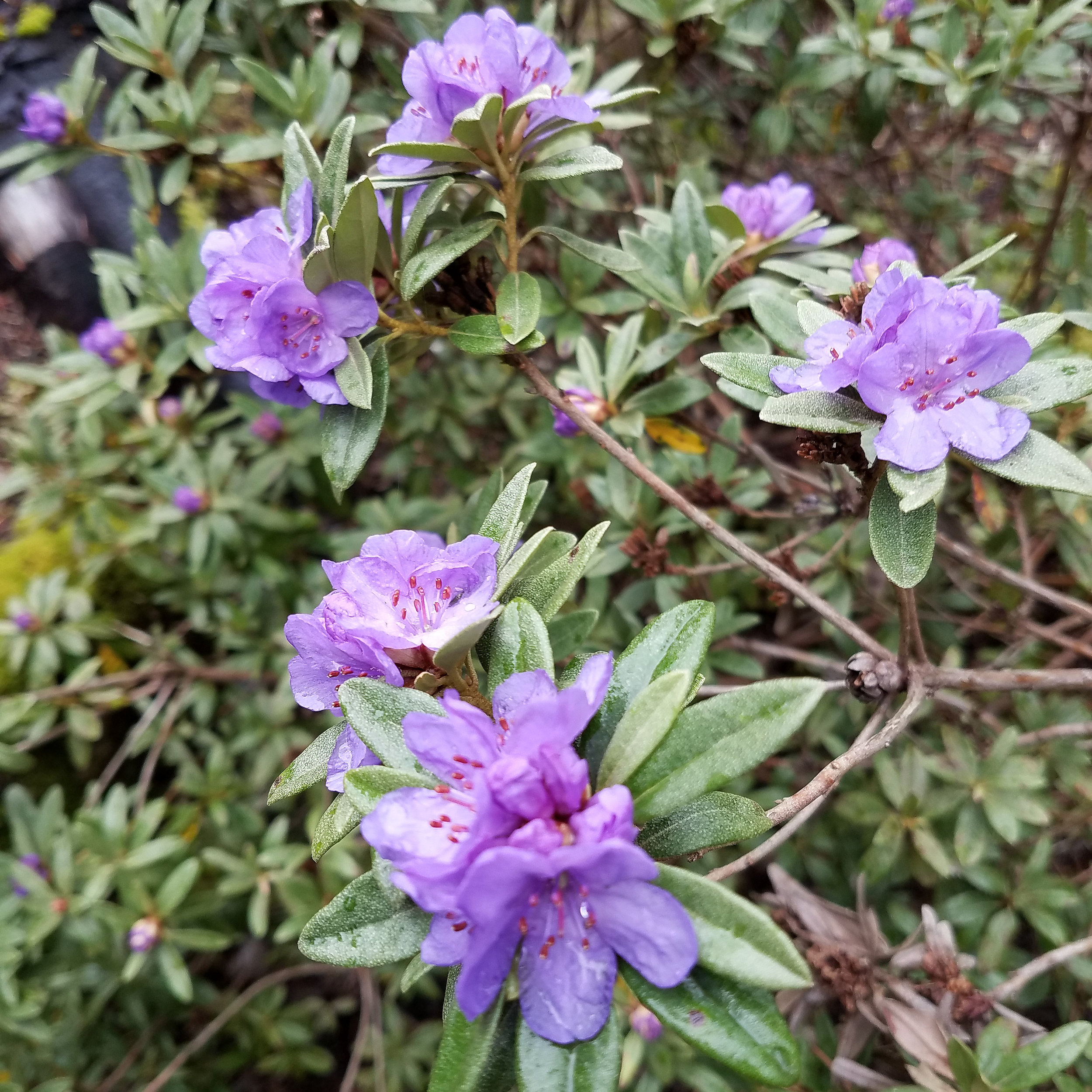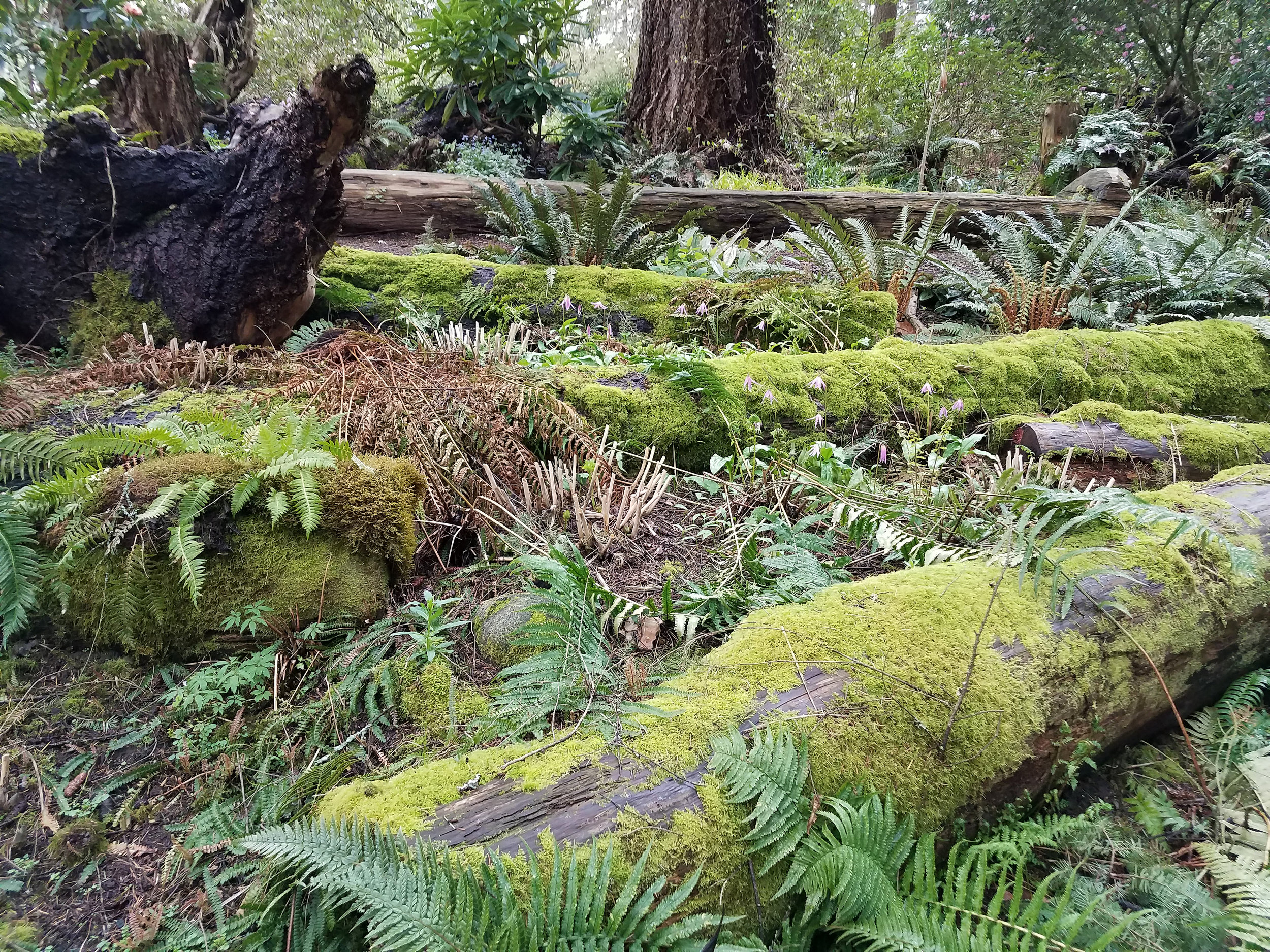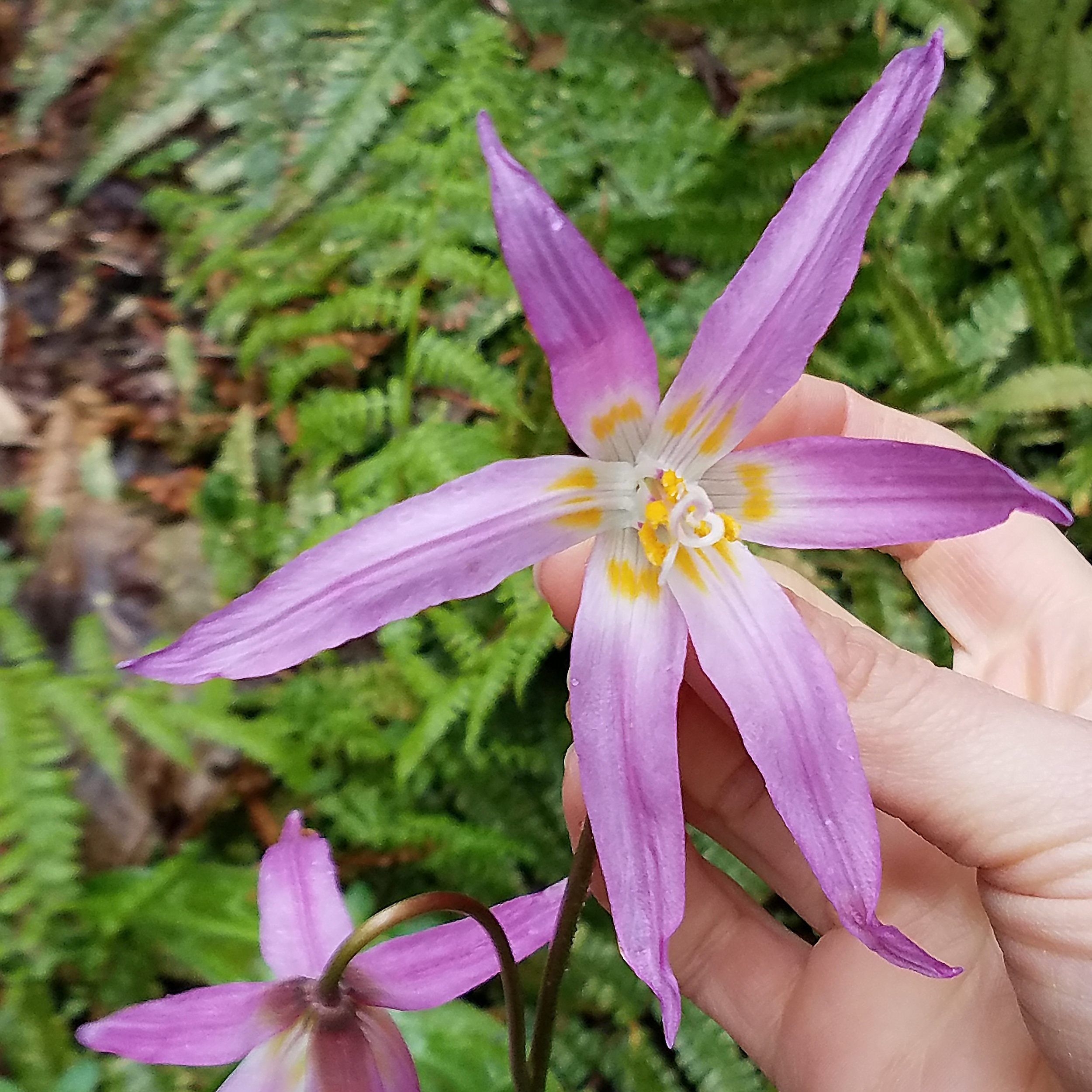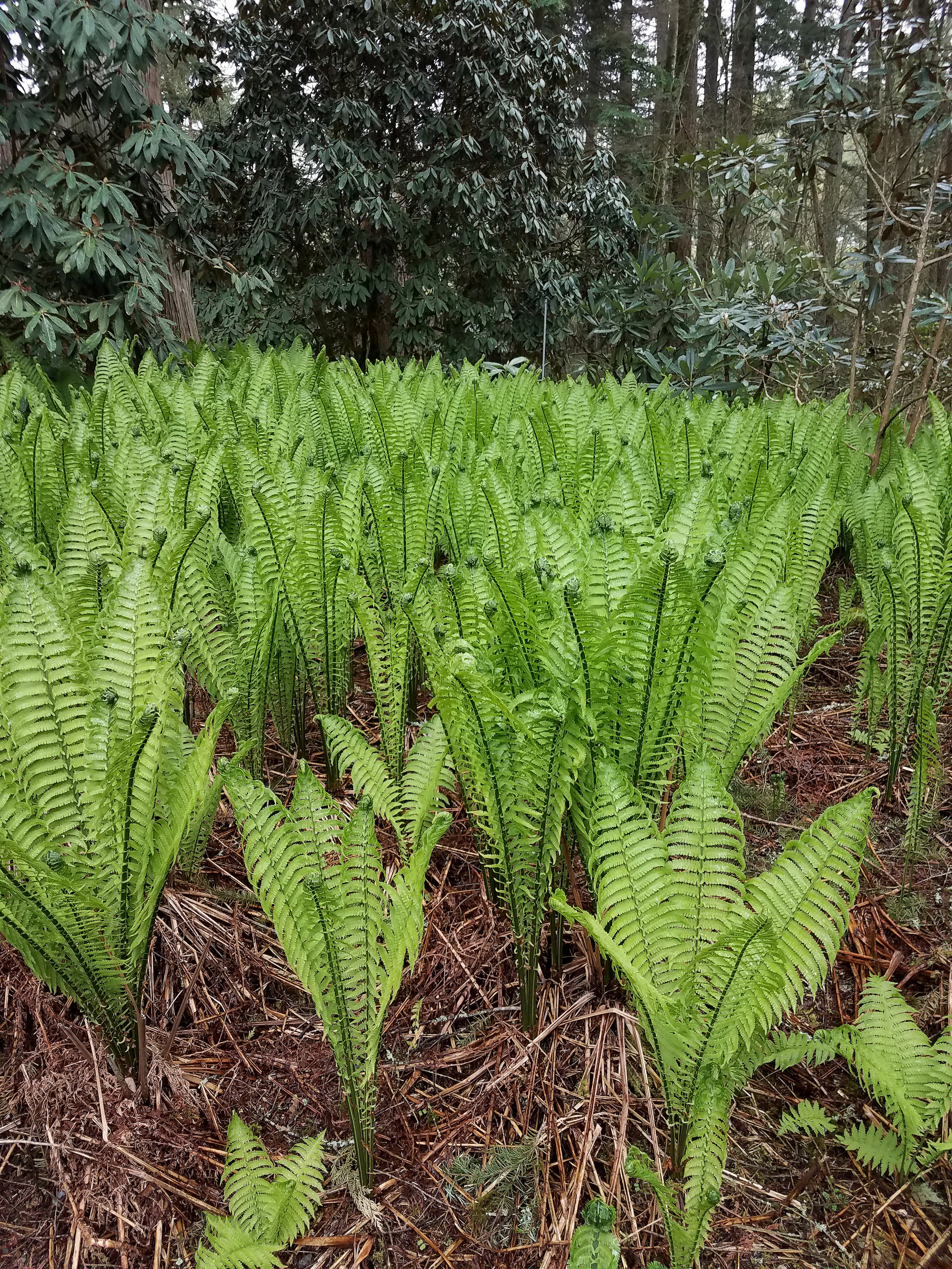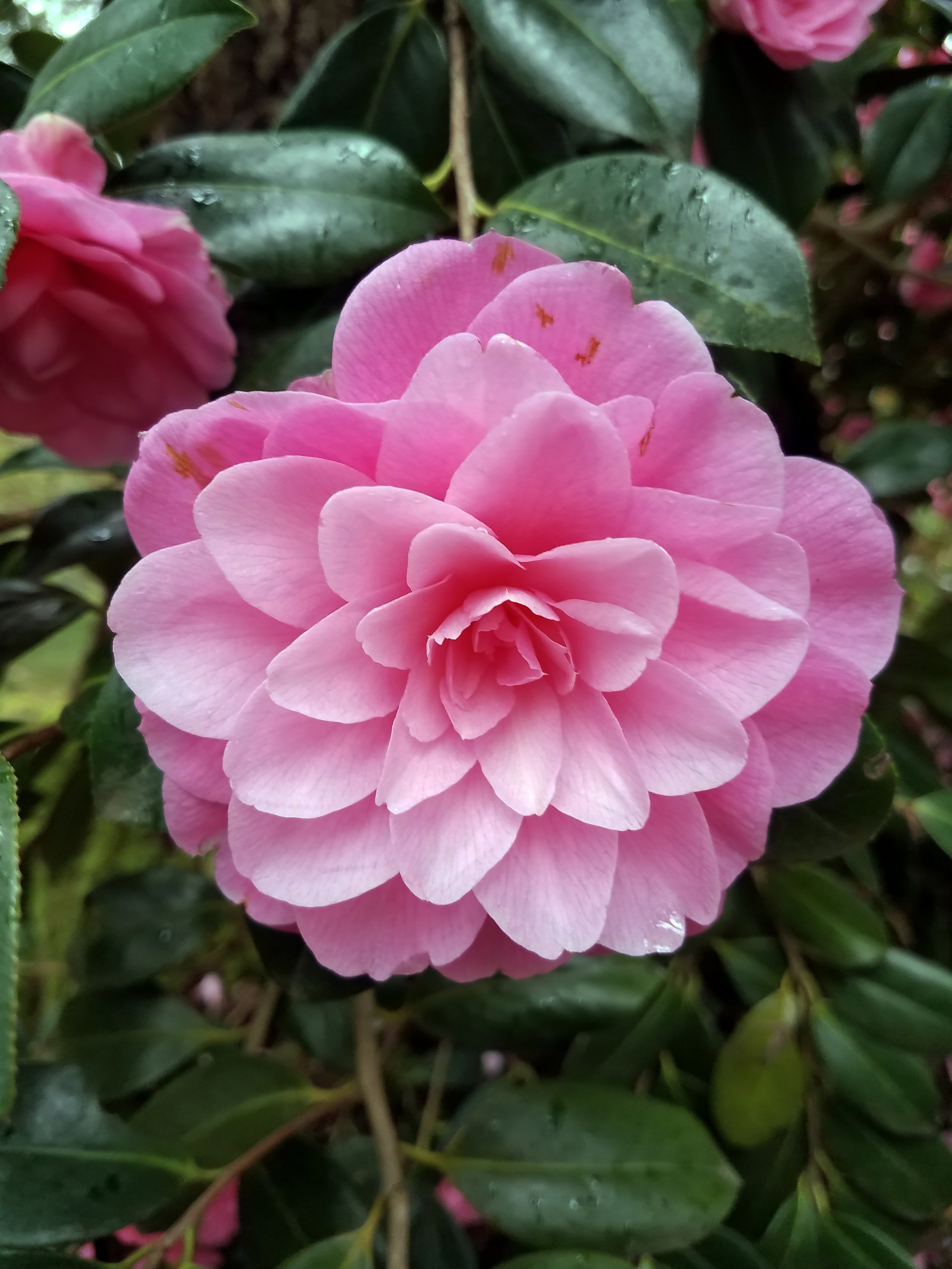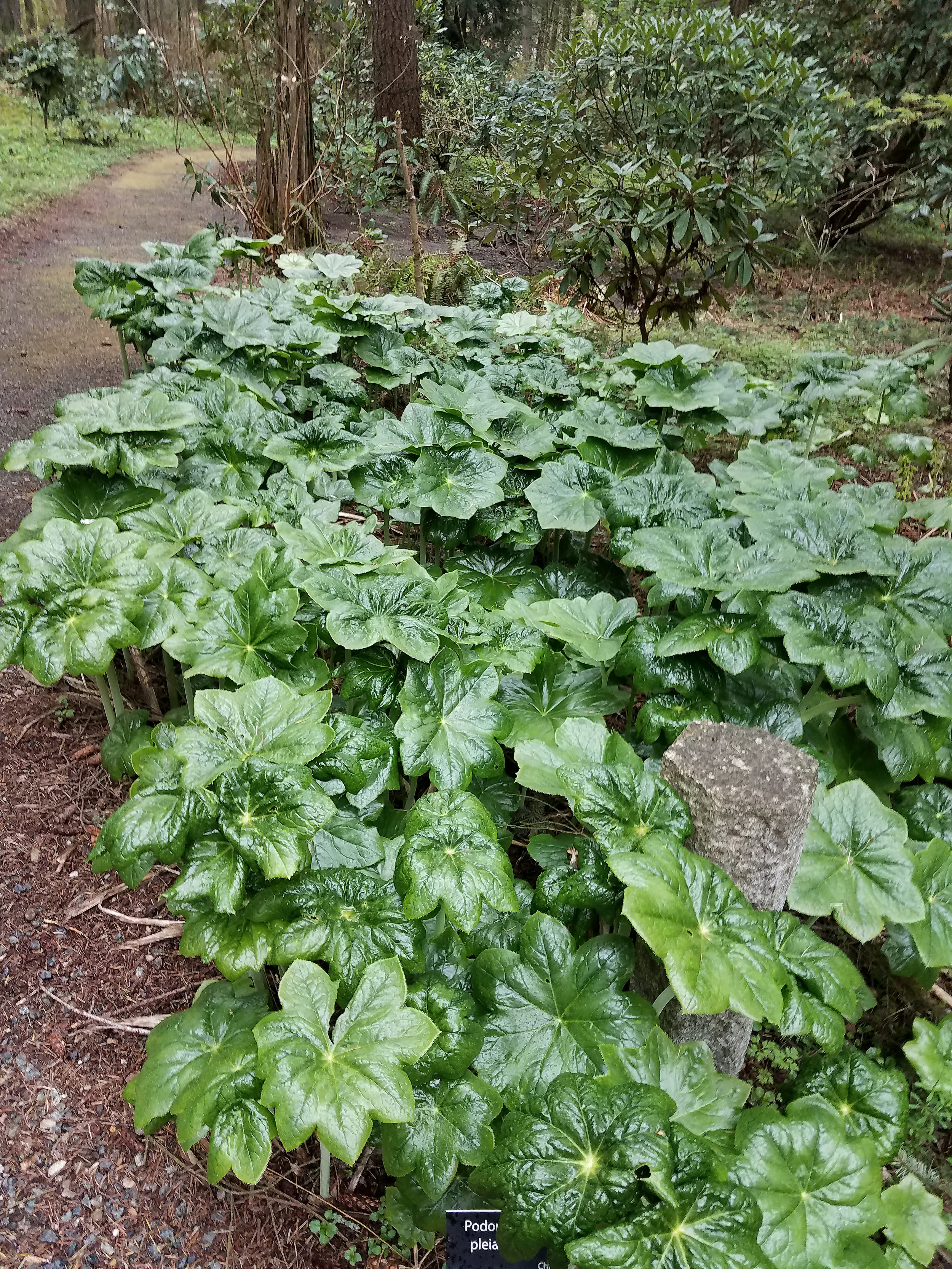I have been living in Seattle for almost six years and I admit, this was my first visit to the Rhododendron Species Botanical Garden. I was very excited for the chance to visit the botanical garden to see different Rhododendron species from around the world.
To provide a bit of history of the garden, the Rhododendron Species Botanical Garden, located in Federal Way, is maintained by the Rhododendron Species Foundation (RSF), a non-profit organization founded in 1964. The goal of this organization was to develop an extensive collection of species in the Rhododendron genus and with the destruction of Rhododendron habitat in recent years, conservation has become an important focus. The botanical garden features over 700 species of Rhododendron and many other fascinating plants as well. The garden encompasses 22 acres with a beautiful visitor center, gift shop, plant nursery, and trails for visitors to leisurely walk in the landscape.
Even though the day I visited was a bit wet and rainy, this did not dampen my spirits. With a garden map in one hand and an umbrella in the other, my first stop was the Rutherford Conservatory. The warmth inside was a welcome change to the rainy weather. The conservatory houses species of Rhododendrons, orchids, ferns, and other plants from tropical regions of the world. I was in awe of the large Tasmanian Tree fern towering over smaller Rhododendrons. Large boulders were incorporated into the planting beds, giving the conservatory a hint of mystery. The white flowers of Rhododendron konori, native to Papua New Guinea, were beautifully illuminated against a backdrop of dark green leaves.
After leaving the comfort of the conservatory, I walked through the Alpine Garden, an incredible collection of alpine Rhododendrons species. One of my favorites was Rhododendron hippophaeoides ‘Haba Shan,’ native to SW China, with small deep lavender/blue flowers in the spring . While the garden might have been more enjoyable on a sunny day, the rain actually added to the allure, especially when gazing upon a sea of flowers from the shelter of a gazebo.
The trail from the Alpine Garden led me through the shady forest where a stumpery lay within. At first glance, the stumpery looked like an odd arrangement of woody debris, slightly out of place in the landscape. This stumpery was created in 2009 as a collaboration between the Hardy Fern Society and the Rhododendron Species Botanical Garden and features stumps and logs intertwined with beautiful ferns, perennials and Rhododendrons. The creation of a stumpery is intentional by artistically arranging woody debris of logs and stumps with the goal of creating habitat for ferns and other plants. The decomposing woody debris offers a home for insects and mammals as well. There were numerous ferns and rhododendrons thriving on the debris, including a beautiful clump of pink Fawn Lily (Erythronium revolutum). Seeing the stumpery gave me inspiration to try and create a small stumpery in my own garden.
As I walked the trails, I passed a mini forest of Ostrich Ferns (Matteuccia struthiopteris) unfurling their new fronds, the blooming flowers of Camellia ‘Water Lily’, and a dense clump of Chinese Mayapple (Podophylum pleianthum). I can’t wait to visit later in the spring and see the Meconopsis (Blue Poppy) meadow in bloom.
One of the highlights of visiting the garden was spending time excitedly looking at the plants for sale in the garden’s nursery. There was a wide selection of unusual rhododendrons, azaleas, ferns, hostas, and much more! I couldn’t resist and bought a beautiful purple rhododendron and ‘Tiny Bubbles’ Mini Hosta to add to my collection.
I always feel humble after visiting botanical gardens, reflecting upon knowledge I have learned from working at Swansons and knowing there is much more to learn, especially when seeing plant species I have never heard of before. Visiting the Rhododendron Species Botanical Garden is a great way to spend the day; walking and admiring the beautiful plants. This garden is well worth visiting multiple times, watching different plants bloom throughout the season. I certainly look forward to returning in the summer and seeing how the garden has changed.

